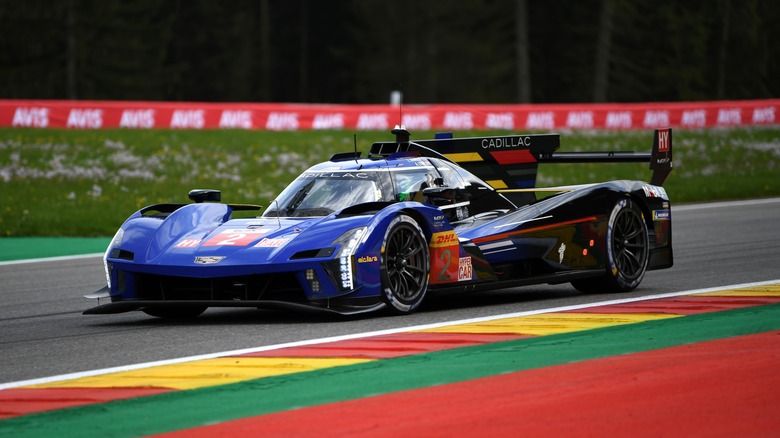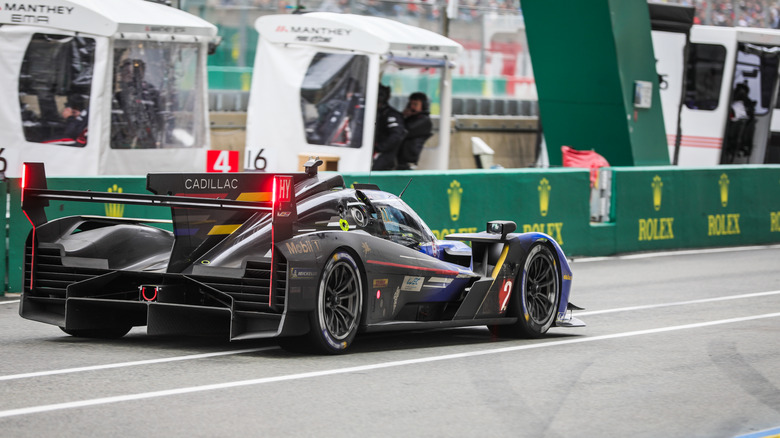Here's Why The Cadillac LMDh Car Sounds So Cool
Endurance car racing has been through many evolutions over the years, with some of the most notorious manufacturers fighting for supremacy on the world's most well-known circuits. Today, there are two distinct Hypercar rulebooks that manufacturers have to abide by to compete in the highest tier of the World Endurance Championship: LMH and LMDh. LMH stands for Le Mans Hypercar and LMDh stands for Le Mans Daytona hybrid.
Both classes include hybrid cars, but a more specific hybrid implementation is required to enter the LMDh class. That means cars in this class need to be equipped with a certain percentage of off-the-shelf parts, including a specific monocoque chassis, suspension, and standardized hybrid system. While LMDh cars are limited in their design, the use of pre-developed parts also brings manufacturer costs down significantly compared to the LMH class, enticing many new manufacturers to join the fight with LMDh machinery.
One of those manufacturers is Cadillac, debuting their LMDh V-Series.R car for the 2023 WEC season. Like other LMDhs, the Cadillac's standardized hybrid system, supplied by Bosch and Williams Advanced Engineering, supplies the rear wheels with an additional 67 horsepower. While there are spec limitations for the chassis and suspension setups in LMDh, manufacturers are allowed to supply whatever internal combustion engine they want, as long as the combined power of both hybrid system and ICE don't exceed 670 brake horsepower. Cadillac's LMC55.R V-8, however, has something unique compared to other LMDhs.
The Cadillac V-Series.R is the only car to use a naturally aspirated cross-plane crank V8
V8 engines aren't uncommon in the LMDh series, but Cadillac took a unique approach to the design of their 5.5L V8. As the highest displacement engine on the grid, it is the only engine in the LMDh class that is naturally aspirated, reducing the overall weight of the engine and eliminating turbo lag. That also plays a role in its sound. Because exhaust gasses escape more freely through the exhaust system without the extra step of spooling a turbine or two, it produces a better sound.
The Cadillac LMDh is also unique because it hosts a more traditional cross-plane V8. While flat-plane crankshaft engines have become the norm in motorsport due to having less internal inertia, a faster revving nature, and overall lightweight construction, cross-plane V8s use offset, 90-degree crank pins, which cause them to have a unique and uneven firing order. That firing order creates a unique, low grumble that is typically associated with old-school muscle cars, though modern V8s also produce some of the best firing sounds.
Sound was key in Cadillac's decision to build a cross-plane V8 the in the LMC55.R V-8, and lead propulsion engineer Adam Trojanek told Hagerty that it was vital that the car had to be easily identified as a Cadillac. "The best way to do that," he said, "is how it sounds."

